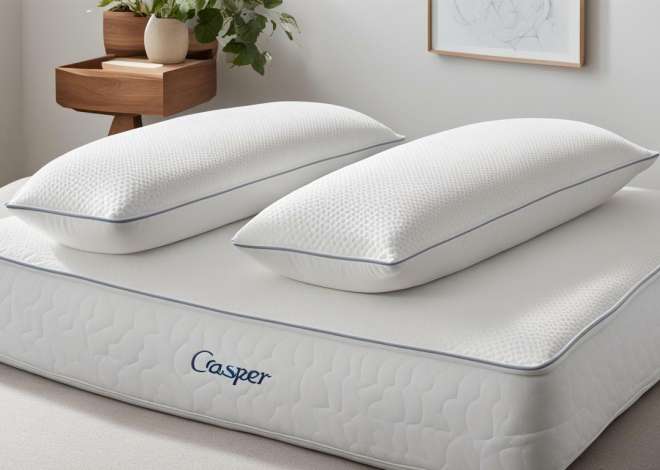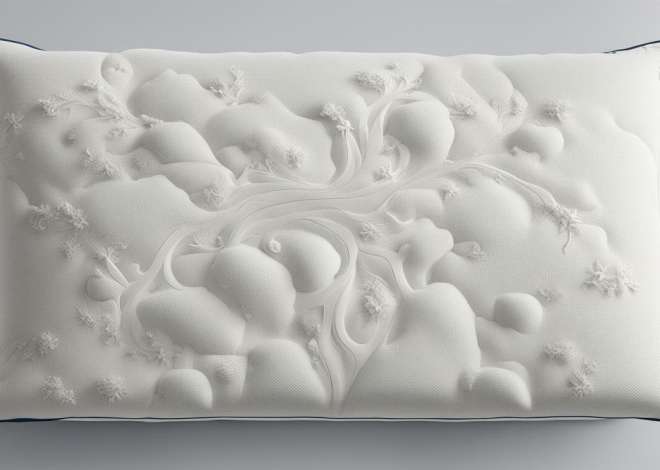
Satin vs Jersey Pillowcases for Hypoallergenic Properties
Are you one of the many people who suffer from allergies, especially at night? Finding the right pillowcase can be essential for a good night’s sleep. But with so many different fabrics and materials available, it can be hard to know what to choose.
Understanding Hypoallergenic Pillowcases
If you have allergies, choosing the right pillowcase can make a big difference in your comfort level. Hypoallergenic pillowcases offer a variety of benefits for allergy sufferers. These pillowcases are made with materials that don’t cause allergic reactions, like dust mites, pet dander, and other allergens. As a result, hypoallergenic pillowcases can help reduce allergy symptoms like sneezing, stuffy noses, and itchy eyes.
It’s important to note that not all hypoallergenic pillowcases are created equal. Some may be labeled as hypoallergenic but still contain materials that can trigger allergies. It’s best to look for pillowcases that are certified by organizations like the Asthma and Allergy Foundation of America (AAFA) or Global Organic Textile Standard (GOTS). These certifications ensure that the pillowcase has been tested and verified to be free of common allergens. Additionally, it’s recommended to wash hypoallergenic pillowcases regularly to maintain their effectiveness in reducing allergy symptoms.
What is Satin Fabric?
Satin is a type of fabric that has a smooth and lustrous surface on one side, while the other side has a dull finish. It’s made with a satin weave, which is a type of weave that creates a shiny surface by reflecting light. Satin can be made from various materials like silk, polyester, and nylon. However, when it comes to hypoallergenic properties, polyester satin pillowcases are the most popular choice.
Characteristics of Satin Pillowcases
Satin pillowcases have a luxurious feel due to their smooth surface. They’re also known for reducing frizz and hair breakage compared to cotton pillowcases. Satin pillowcases can be especially beneficial for people with curly or frizzy hair as it helps to maintain the natural moisture of the hair.
What is Jersey Fabric?
Jersey is a type of knit fabric commonly used for clothing, bedding and even pillowcases. It’s usually made from cotton, but can also be made from synthetic materials like polyester or viscose.
Characteristics of Jersey Pillowcases
Jersey pillowcases are soft, stretchy, and breathable. They’re known for their cozy feel, as well as their durability, making them an excellent choice for everyday use. Since jersey is commonly made from cotton, it can also provide a natural option for allergy sufferers.
The Link Between Fabric and Allergies
Some fabrics can trigger allergic reactions, especially for people with sensitive skin or respiratory issues. Traditional cotton pillowcases, for example, can harbor pet dander, dust mites, and other allergens. These allergens can cause discomfort, sneezing, or even trigger an asthma attack. That’s why choosing the right pillowcase is essential for maintaining good health and sleep.
Benefits of Using Hypoallergenic Pillowcases
The benefits of hypoallergenic pillowcases go beyond reducing allergy symptoms. They can also provide a better sleep experience overall. Hypoallergenic pillowcases are usually made with high-quality materials that feel softer, smoother, and less scratchy than traditional pillowcases. This can lead to a more comfortable and restful sleep, which can help improve overall health and well-being.
How to Choose the Right Pillowcase for Your Allergies
When you’re choosing a pillowcase for your allergies, there are a few key factors to consider. The first is the fabric. Look for materials that are hypoallergenic, like polyester-satin or cotton-jersey. Secondly, consider the pore size of the fabric. The smaller the pore size, the less likely it is to trap allergens. Lastly, consider if the pillowcase is easy to clean and maintain. This will ensure that allergens don’t build up over time.
Comparing Satin and Jersey Pillowcases for Hypoallergenic Properties
Both satin and jersey pillowcases offer different benefits for people with allergies. Satin pillowcases provide a smooth and luxurious feel while reducing hair breakage and frizz. Polyester-satin pillowcases also provide excellent hypoallergenic properties, making them great for people with allergies.
Jersey pillowcases, on the other hand, provide a cozy and comfortable feel, while also being durable and breathable. Cotton-jersey pillowcases are hypoallergenic, soft and provide a natural option for those with allergy sensitivity.
Pros and Cons of Satin and Jersey Pillowcases for Allergy Sufferers
The choice between satin and jersey pillowcases ultimately depends on your personal preferences and needs. Here are some pros and cons of each:
Satin Pillowcases
- Pros:
- Smooth and luxurious feel
- Reduced hair breakage and frizz
- Excellent hypoallergenic properties
- Cons:
- Can be more expensive than other options
- Require special care to maintain their shine
Jersey Pillowcases
- Pros:
- Cozy and comfortable feel
- Durable and breathable
- Provides a natural option for allergy sensitivity
- Cons:
- Can shrink over time
- May not provide a smooth surface for hair or skin
Additional Factors to Consider When Choosing a Hypoallergenic Pillowcase
When choosing a hypoallergenic pillowcase, there are a few more factors to consider:
- Thread count: The higher the thread count, the softer the pillowcase will be.
- Color: Darker colors can hide stains while lighter colors show more dirt.
- Size: Make sure the pillowcase fits your pillow perfectly to avoid slipping and discomfort.
- Brand: Look for reputable brands that specialize in hypoallergenic bedding.
Tips for Maintaining Cleanliness and Hygiene of Your Hypoallergenic Pillowcase
To ensure that your hypoallergenic pillowcase remains clean and hygienic, follow these tips:
- Wash your pillowcase every 1-2 weeks in hot water to kill dust mites and reduce allergens.
- Use a fragrance-free laundry detergent to avoid triggering sensitivities.
- Dry on high heat to ensure all bacteria are killed.
- Avoid using fabric softeners, as they can reduce the effectiveness of the hypoallergenic properties.
In conclusion, choosing a hypoallergenic pillowcase can be an essential step towards managing allergies and getting a better night’s sleep. Satin and jersey pillowcases both offer different benefits and are great hypoallergenic options. Take the time to evaluate your preferences and needs, and choose a pillowcase that works best for you.


